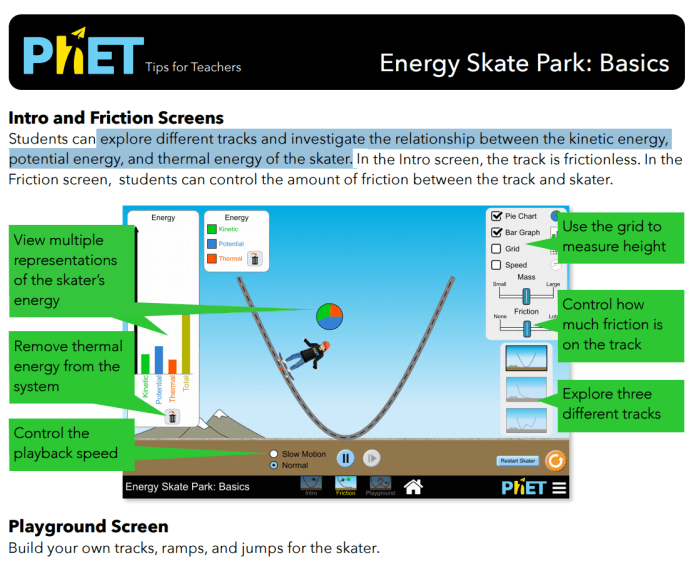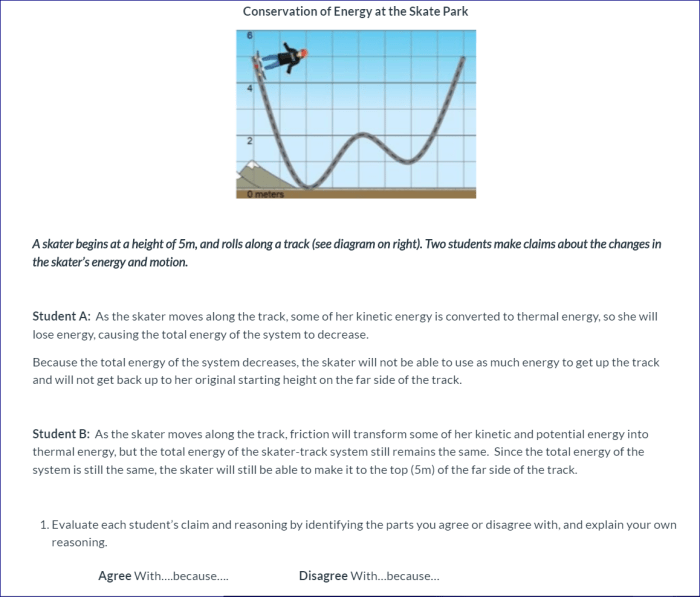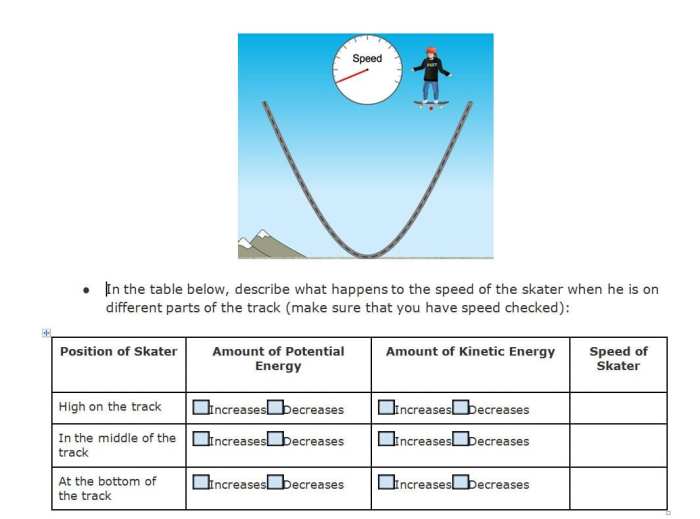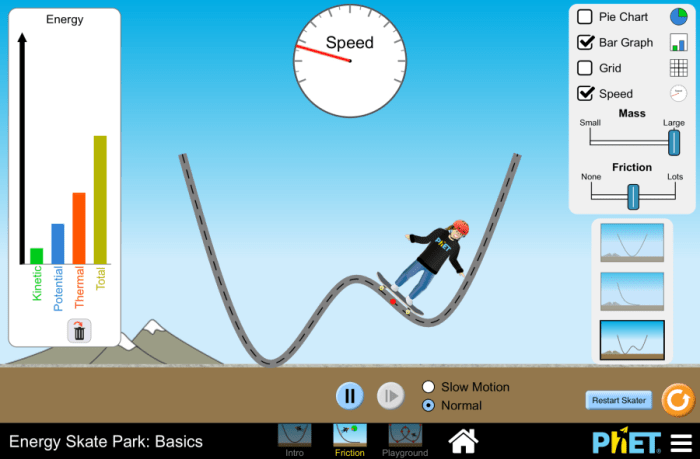Conservation of energy at the skate park answer key provides a comprehensive understanding of energy transfer and transformation within the dynamic environment of a skate park. This guide delves into the fundamental principles of energy conservation, exploring how energy is converted and utilized by skaters as they navigate ramps, rails, and bowls.
Throughout this exploration, we will uncover the factors that influence energy efficiency, examining the impact of friction and air resistance on energy transfer. Additionally, we will investigate the practical applications of conservation principles, revealing how an understanding of energy dynamics can enhance skate park design and optimize skaters’ energy usage.
Conservation of Energy: Conservation Of Energy At The Skate Park Answer Key

Conservation of energy is a fundamental principle of physics that states that the total amount of energy in an isolated system remains constant, although it may be transferred from one form to another.
At a skate park, energy is transferred and transformed in various ways as skaters move through the ramps and obstacles.
Energy Conversion at the Skate Park
Potential energy is converted into kinetic energy when a skater rolls down a ramp. As the skater gains speed, their kinetic energy increases.
Kinetic energy is transformed into other forms of energy, such as heat and sound, as the skater rolls over obstacles and slides on the ramps.
Factors Affecting Energy Conservation
The efficiency of energy conversion at a skate park is influenced by several factors, including:
- Friction: Friction between the skateboard and the ramps reduces the skater’s speed, converting kinetic energy into heat.
- Air resistance: Air resistance also slows down the skater, converting kinetic energy into heat.
Applications of Conservation Principles, Conservation of energy at the skate park answer key
Understanding conservation of energy can help improve skate park design by optimizing the layout of ramps and obstacles to minimize friction and air resistance.
Skaters can also use their knowledge of energy conservation to optimize their energy usage, such as by pumping their legs to gain speed instead of relying solely on gravity.
Renewable Energy Sources
Skate parks can utilize renewable energy sources, such as solar and wind energy, to reduce their environmental impact.
- Solar panels can be installed to generate electricity for lighting and other equipment.
- Wind turbines can be used to generate electricity or pump water for irrigation.
Environmental Impact
Conserving energy at skate parks reduces greenhouse gas emissions and helps protect the environment.
By using renewable energy sources and optimizing energy usage, skate parks can contribute to sustainability and minimize their ecological footprint.
FAQ
What is the primary form of energy utilized by skaters at a skate park?
Kinetic energy, the energy of motion, is the primary form of energy used by skaters as they navigate the ramps and obstacles of a skate park.
How does friction impact energy transfer at a skate park?
Friction, the force that opposes motion between two surfaces, reduces the efficiency of energy transfer by converting kinetic energy into thermal energy.
What are some ways to optimize energy usage while skateboarding?
Skaters can optimize energy usage by maintaining a smooth and fluid motion, reducing friction through proper waxing, and utilizing momentum to conserve kinetic energy.


